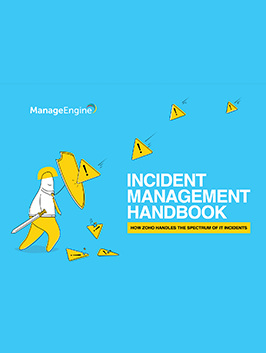IT Problem management best practices

Although we've discussed the process and the various methods to practice problem management, there are certain things to keep in mind while actually going about it. These do's and don'ts will help you avoid little hiccups on your problem management journey.
DO's:
- Broadcast the exact differences between an incident and a problem: ITSM best practice frameworks work only when there's a clear, acknowledged divide between incident management and problem management
- Acknowledge that the problem manager is a non-technical role: The problem manager is the glue that holds the entire team together. The technical part of the process will be conducted by experts, but the problem manager enables it to happen.
- Establish the objectives for your problem management efforts: Move forward with short-term and long-term goals so your focus is not easily diminished. For example, consider short-term goals as something like solving the top ten problems that disrupt the business, and long-term goals akin to improving your support cost savings.
- Always go for permanent solutions rather than temporary ones: Realize the true benefits of problem management by always going for permanent solutions, even if it's a permanent workaround.
- Welcome the people that challenge the state of things: Be appreciative of members who question the existing state of things. This could be the spark that leads to positively improving your organization's system.
DON'Ts:
- Try to achieve perfection from the start: Problem management is a learning experience and is unique to each organization. Trying to be perfect from the start is setting yourself up for failure. No one becomes a rock star the first day they start playing the guitar.
- Complicate yourself with reactive and proactive approaches: Take it easy in the beginning. Some problems can't be overlooked due to their severity, and some have to be found through analysis.
- Measure problem management as an individual process: ITSM practices as a whole are designed to cooperate with each other to make your IT service delivery more manageable. Both the good and bad results of your problem management can stem from incident management, change management, or even project management.
Experience how problem management benefits your organization
Up next:
In the final part of this comprehensive guide to problem management, we will go through a couple of crucial topics for a successful problem management effort. Head on towards the last section to learn about the KPIs to measure in problem management and how to choose the right tool for better success.
Assess your incident response readiness to kick-start your problem management journey
The zeroth step in the journey towards proactive problem management is establishing a robust incident management process in your IT environment. Discover how Zoho, our parent company, handles the spectrum of incidents thrown at it year over year and assess your incident management readiness at an enterprise scale.
Download a free copy of our incident management handbook and a best practice checklist to review your problem management solution.
-

Problem management feature checklist
-

IT incident management handbook

